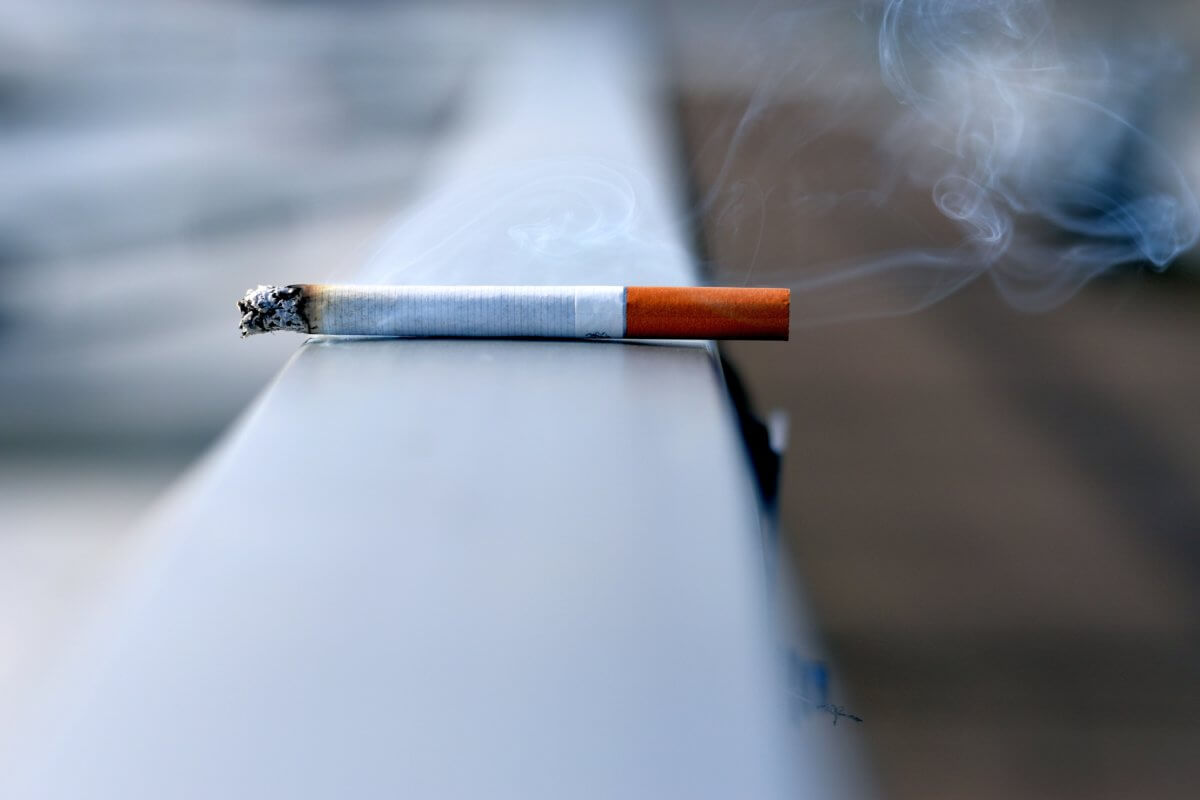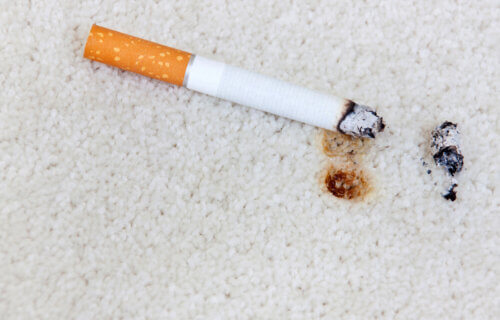BERKELEY, Calif. — Most people have experienced secondhand smoke simply by passing a smoker on the street, but did you know there’s also thirdhand smoke? When people use tobacco products inside on a regular basis, pollutants from this smoke tend to linger and attach themselves to indoor surfaces long after they empty their ashtrays. These leftover residues, otherwise known as thirdhand smoke, can serve as a long-term source of potentially harmful indoor pollutants.
Now, new research from a team of scientists led by the Department of Energy’s Lawrence Berkeley National Laboratory (Berkeley Lab) is pointing to carpets specifically as a major source of thirdhand smoke. The study indicates carpets can’t help but stubbornly retain tobacco pollutants and are incredibly hard to clean.
When thirdhand smoke settles into a surface, it doesn’t tend to stay there too long. Chemicals are constantly re-entering the air we breathe, and sometimes that means transforming into new types of contaminants. Carpets, meanwhile, are a major “sink” for thirdhand smoke, study authors explain.
To reach these findings, researchers analyzed the effects of ozonation, a common cleaning method, on carpets that had been exposed to smoke. More specifically, this latest report examined older smoke-contaminated carpets taken from homes in San Diego, in addition to a group of new carpets exposed to fresh smoke in a lab setting.
Study authors ultimately discovered that while ozonation did partially remove a group of compounds called polycyclic aromatic hydrocarbons from both worn and fresh carpet samples, the cleaning technique was still largely ineffective at removing deeply embedded nicotine. Why? Researchers explain that fibers and other chemical constituents in the material actually serve as a “chemical shield” or a type that protects the contaminants.
The team evaluated the samples in a room-size environmental chamber at Berkeley Lab’s Air Quality Testing Laboratory. Additional tests were also carried out at the Molecular Foundry, a DOE Office of Science user facility at Berkeley Lab.

This work, which was supported by grants from the University of California Tobacco-Related Disease Research Program, points to carpets as a major culprit and key reservoir and source of contaminants from thirdhand smoke.
“Because it does not reach deeply into materials, ozone has a limited ability to ‘clean’ permanently,” says Berkeley Lab researcher Xiaochen Tang, the study’s lead author, in a media release. “In the case of carpet, the best solution may be replacing it with a new one.”
This study builds upon a previous project also conducted at Berkeley Lab’s Indoor Environment Group that had concluded ozonation can indeed remove tobacco contaminants from a room. However, during that study, the ozonation was only conducted on freshly generated thirdhand smoke.
During ozonation, ozone generators release ozone gas that reacts with nearby harmful compounds, removing them from the air and surfaces. However, those generators can also create a burst of contaminants, according to the aforementioned earlier study. Researchers say this indicates a pressing need for ventilation and a waiting period before people can re-enter a space following ozonation.
Berkeley Lab Senior Scientist Hugo Destaillats adds that ozonation has been used as a remediation method for years because it is especially efficient at removing odors. However, that characteristic can create a false sense of efficacy.
“Ozone generators are also used to remediate fire damage and mold, but they have limitations, as we saw in this study,” Destaillats concludes. “The lack of a detectable smell does not mean that all of the contaminants we are concerned about have been eliminated.”
Moving forward, the research team wants to investigate the role of other indoor reservoirs, like drywall and upholstery.
The study is published in the journal Environmental Science & Technology.
You might also be interested in:
- Best Ways To Quit Smoking: How To Resist Cravings, According To Experts
- Thirdhand smoke an invisible danger within many public settings, scientists warn
- Thousands of unknown chemicals discovered in e-cigarettes

